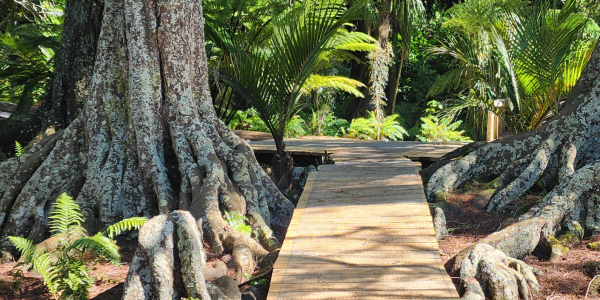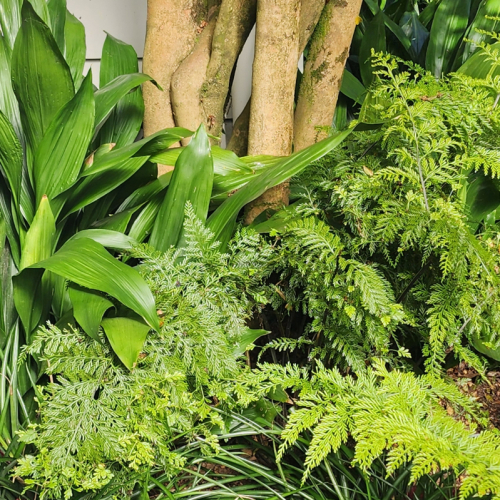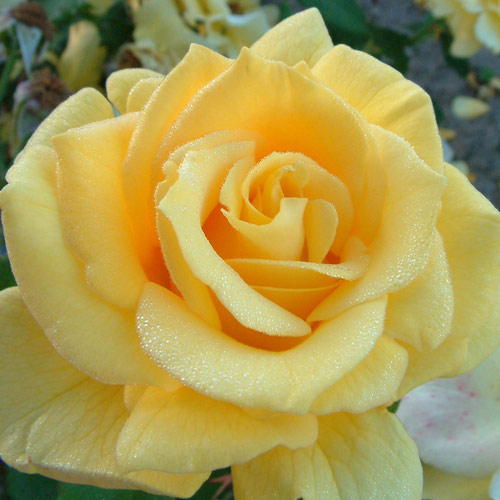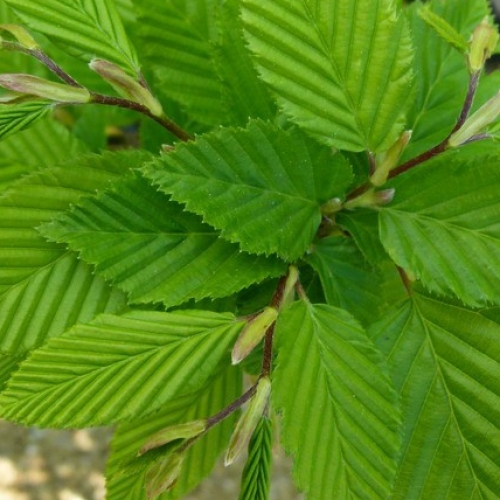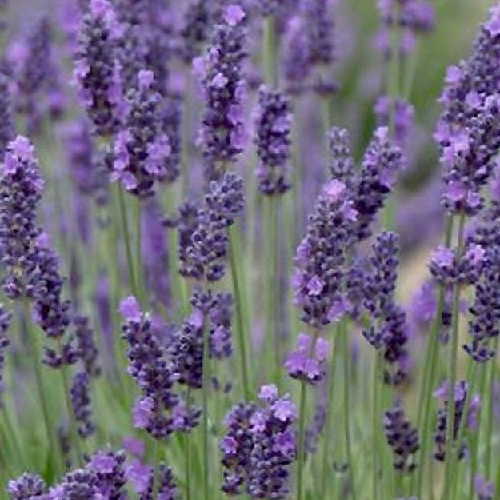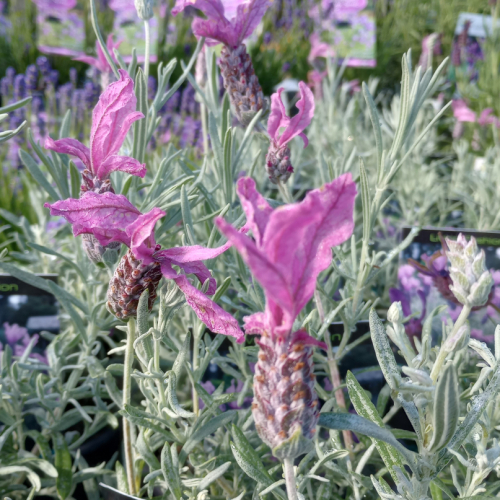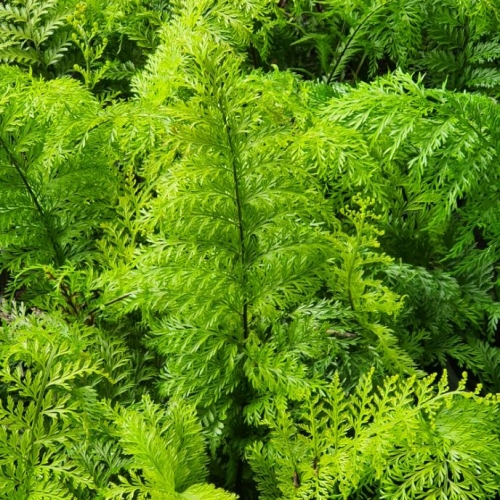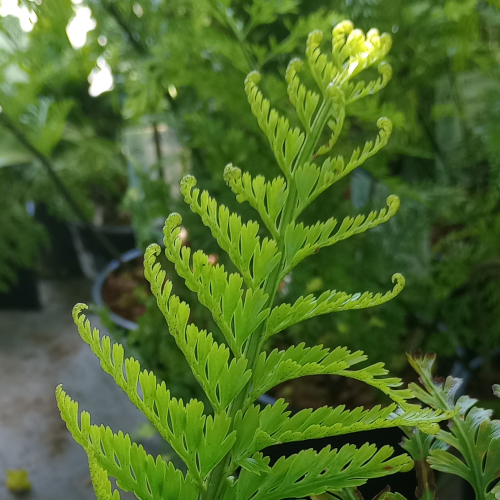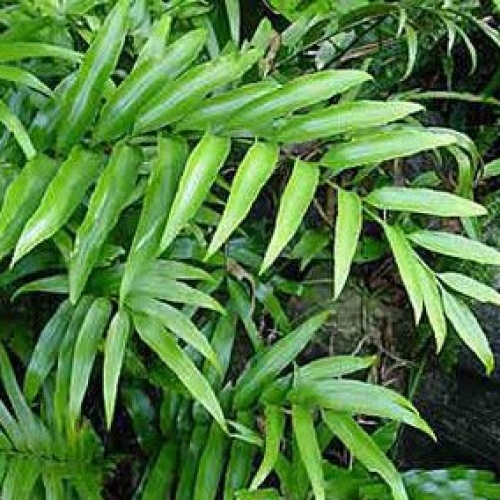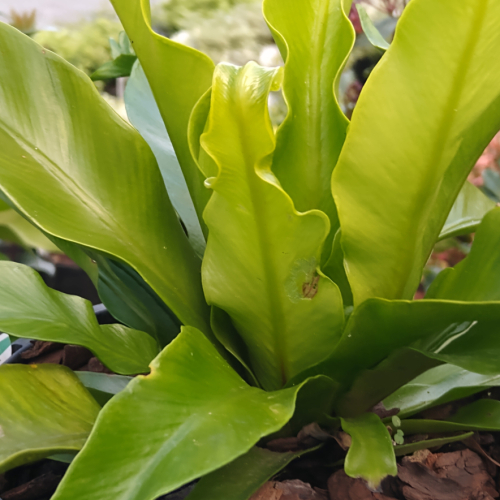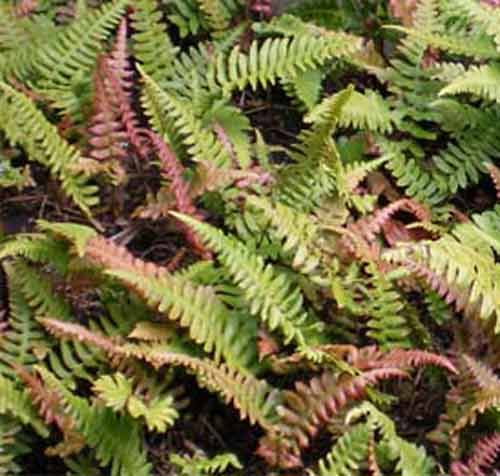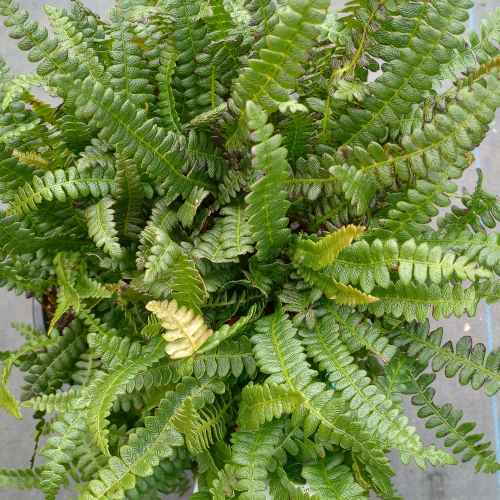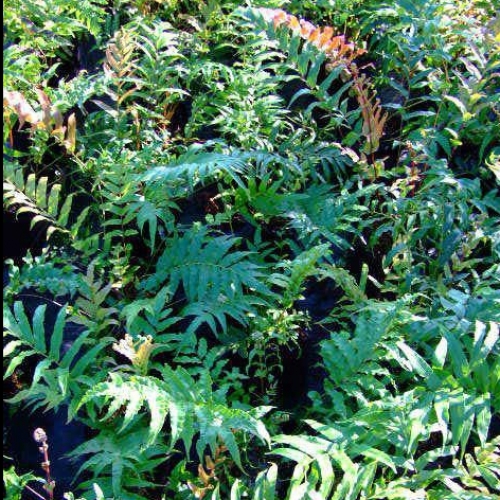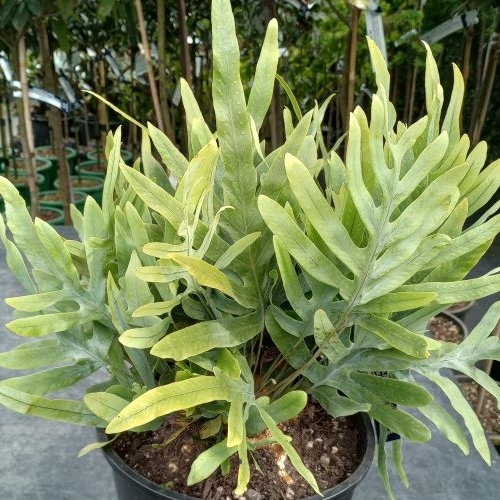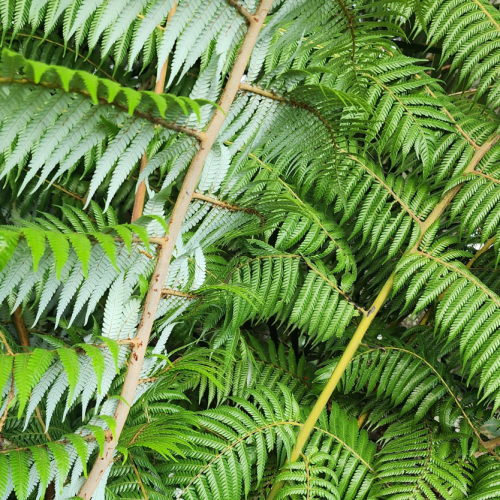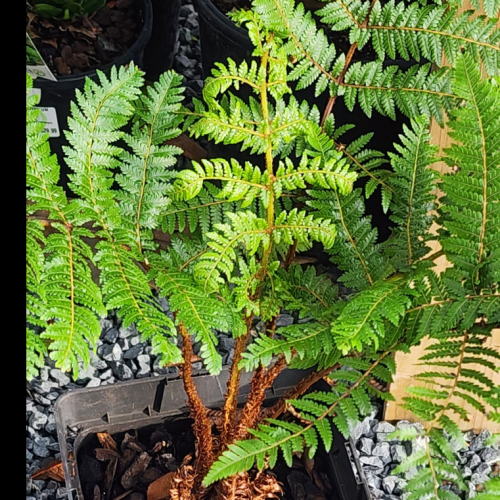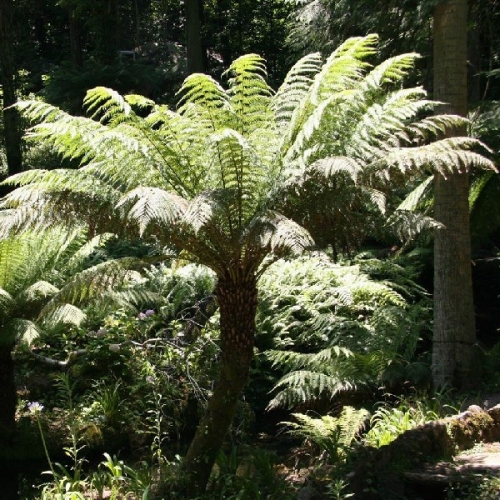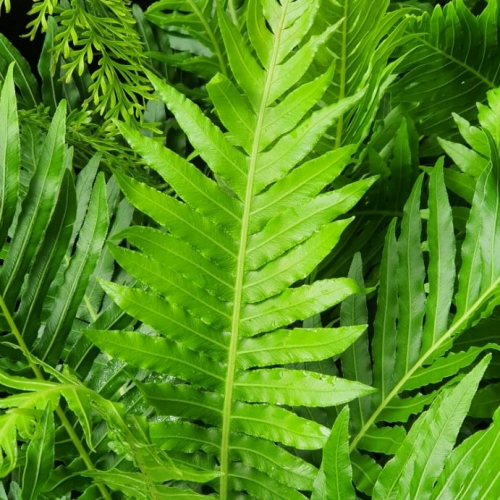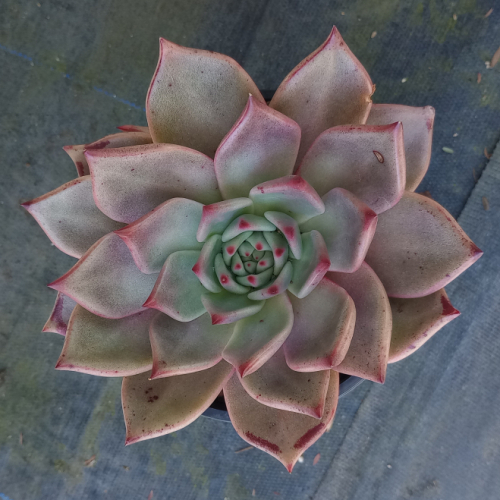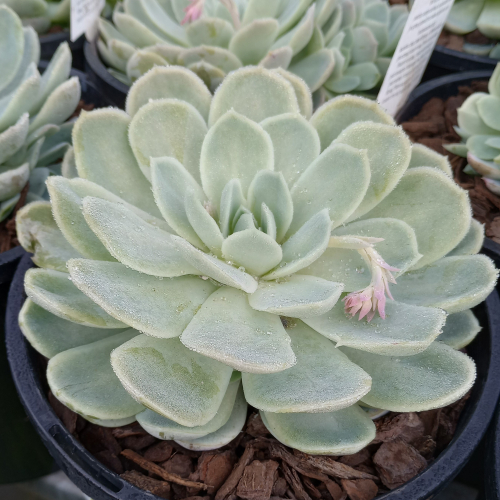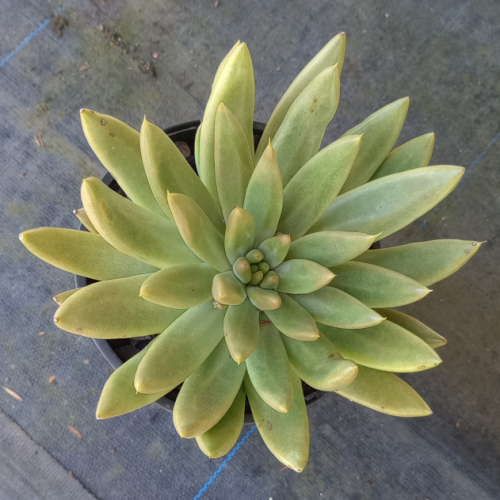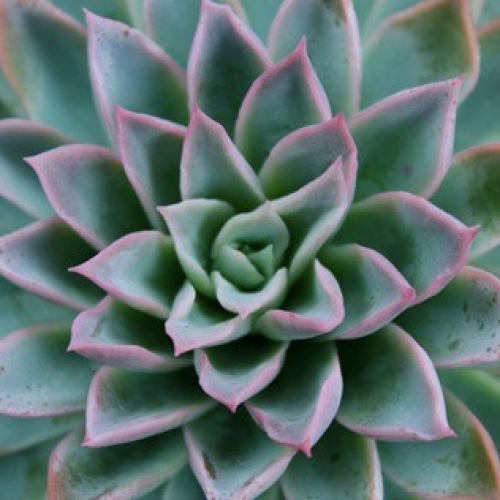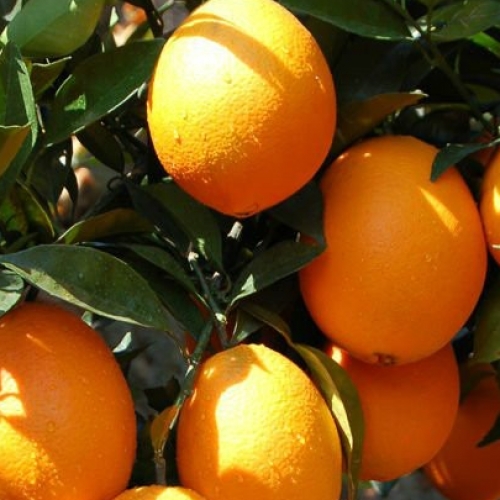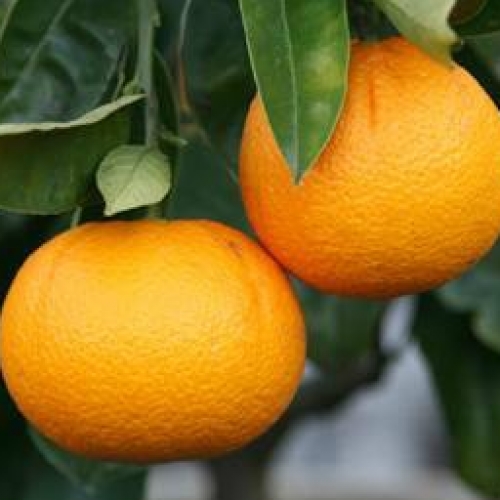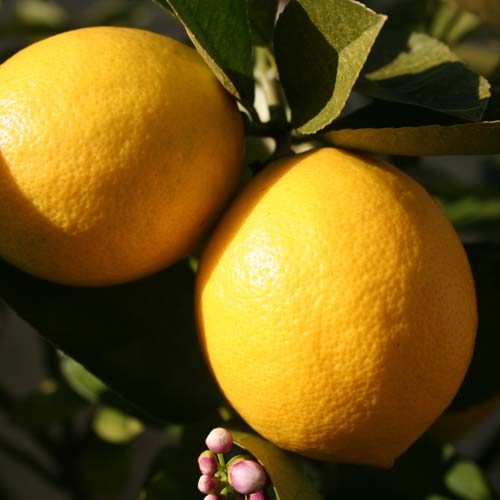Saturday 23rd November, 2024
Hi
Keep on planting? That is the question.
"Is it too late?" is a question that we often get asked, and due to the liquid sunshine and warmth (this year the soil temps are on average 2 degrees warmer than they were last year) I'd say that the ground is good for growing. There are many aspects to consider when answering this question. For example, any containerized plant can be planted all year around because it comes with its own root mass. I often say that it's better to plant the likes of
Roses and
Deciduous trees now (if you can get your specific choice) rather than say, in the winter, because you are planting into a growing season rather than a dormant one. Not to mention that the said plant has also fired and is doing its thing quite nicely with good new feeder roots.
It also has to be said that some plants, like
Lavender, prefer to be planted in a drier season rather than during our wet and foggy Waikato winter. There is also the scenario that a wet situation may be too wet for a plant to get established and so it will get a better foothold when planted into a drier season, and thus will be more able cope with the following wet winter.
It stands to reason that a wet situation will make for stress-free summer planting; like my restoration project of the wetland
Kahikatea. The swampy areas will be dry enough to plant but we will leave the banks until the Autumn as they will dry off.
We never really know if it's going to be a wet or dry summer but if you are able to provide water, in case it's dry, then again keep planting. Bigger projects that involve mass planting areas may well be better to wait for the Autumn, unless you can provide water, but even trees planted in the Winter may need extra water in a dry summer as they may not have established enough. That said, in most cases they will be fine.
Generally, my gardening and planting time is usually over the summer as spring is often too busy to have the time. Just a note to add to that, I find that many that plant at this time of year do seem to over compensate and water way to much. It's all about reading the situation: watering well every day may cause the demise of your plant (killing it with kindness!). Even in the hottest and driest months of Feb and March watering every second week may be adequate for a water top up (perhaps????) though this will depend on the plant... I'm sure that for me it's just an instinct as it's so hard to be definitive, but that's what nurturing a living thing is all about.
The diet of dinosaurs
Ferns are one of the oldest groups of plants with fossil records dating back some 360 million years. Apparently, ferns were here some 200 million years before the advent of flowers. Like most plants, ferns have roots, stems and leaves, but they do not have flowers or seeds. Instead, they reproduce sexually with spores.
Why do ferns generally grow in moist conditions (though not always) ? Because they lack vascular tissue for long distance transportation of water within the plant. They often have thin, lacy (fernlike), filmy foliage that has a thin leaf cuticle which will dry out in drier environments. Ferns also lack stomata (tiny openings found in plant leaves for gas exchange) and so absorb water by diffusion. Most importantly, they also need water/moisture for their technique of sex... lol no bees required here.
I'm sure that ferns of today are quite different from those of the dinosaurs, but they do have a place in the garden, especially those moist semi-shade spots. Just to qualify, ferns like moist positions and moisture in the air but don't like sitting or growing in wet spots. Because they don't have flowers, their foliage makes for great contrast against other foliage, especially those with dissected leaves placed next to those with broad of coloured leaves.
Tony tells me that Victorians had a fascination with ferns and brought them into popularity with their conservatories and stumperies and I guess that today's world is no different as trends come and go. I am not sure that many would go to the effort of creating a stumpery, but we are certainly going to the effort of creating a new board walk through the Kaiks and including mass plantings of ferns. I guess that the stunning buttress roots of the
Kahikatea could make it look like a modern day stumpery???
Just in case you are thinking "but what is a stumpery??"... it's like a rockery but made with dead tree parts like stumps and logs filled with pockets to plant. Biddulph is a famous stumpery to visit in the UK.
There is no reason why
ferns can't be used in a conventional shaded garden along with other plants, and the
Aspleniums are very suitable.
Asplenium bulbiferum, or most will know it as '
Hen and chicken' fern due to its ability to carry little ferns on the older leaves, is very suitable. Aspleniums tend to be quite hardy, forgiving and cope with shaded and drier conditions. I have them in the display garden in several positions on the south side of the house and behind a formal hedge where they contrast very well against the broad leaves of the Cast iron plant (Aspidistra).
Aspleninum oblongifolia (Shining spleenwort) is a fav of mine. Fabulous shiny foliage, tough and hardy and will even tolerate quite dry periods. I bought these to go in and around my board walk, but we have them on offer in the nursery too.
Asplenium Maori Princess A selected form of the 'Hen and Chicken' Fern that has luxuriant thick and shiny green fronds and is not as dissected as bulbiferum... Again really cool mass planted
Asplenium Antiquum or many will know this as
Birds nest fern and probably well known as a house plant (all these Aspleniums can be grown indoors). I love its large broad leaves and it's on my list to plant into the garden too.
Some little ferns with cute ladder like foliage and with new growth that is often pinkish
Doodia media Pukupuku. This little native fern loves a shady moist spot with protection from harsh frost. The new leaves emerge in tones of pink slowly turning to fresh green with some bronze tones. Attractive serrated leaflets.
Blechnum penna marina A low growing fern that spreads by creeping rhizomes. Its natural habitat is on the edge of alpine bogs so that tells you it likes moisture and can tolerate cold. The dark green fronds are tipped with pink when young. It likes quite a lot of light and makes an excellent groundcover.
Some ferns that grow into the fern equivalent of a tree i.e. punga
Cyathea Dealbata Native. NZ's iconic national symbol the '
Silver Fern' is relatively easy to grow in a semi-shaded position with humus-rich soil and protection from harsh frost. Forms an erect trunk topped off with a crown of green fronds with distinctive silver-white undersides.
Cyathea Smithii Native. Soft and delicate looking fronds spread horizontally from the crown reaching 2-2.5m in length. The trunk is covered in chestnut coloured scales. Plant in a sheltered position in moist humus-rich soil.
Dicksonia Squarrosa Brown punga. This is the most common tree fern found in forests throughout New Zealand. It is a medium sized tree fern, fast growing and tolerates a wide range of conditions. The fronds are harsh to touch and are dark green above and paler on the underside.
Blechnum silver lady Native Fern. This fern is also known as the dwarf tree fern as it develops a short trunk when mature. Can be grown indoors or outdoors. Likes a warm shady spot in the garden with moist free draining soil.
Phlebodium Blue Star With long, wavy, blue-green leaf fronds this is a stunning specimen to have in a hanging basket or pot/container in a sheltered position. Avoid draughts and loves to be mist sprayed on the foliage rather than watered. Can be used indoors and is an air-purifying plant.
Fresh new arrivals.... The succulents
Succulents are fab plants but in contrast to ferns, these have specialized leaves that store water and they love hot baking almost dry conditions which makes them great pot plant subjects. Instead of a stumpery perhaps a traditional rockery may be your thing?? A couple of tasters for you below, otherwise check out this
link to see the new selection.
Echeveria Agavoides Red A rare type of succulent known for its fleshy leaves. The green foliage is very highlighted with red colour tones making it appear more red than green. Red flowers in late spring and into Summer.
Echeveria Elegans has fleshy silver leaves that grow in Summer to Autumn. Ideal for pots, containers, borders, as a ground cover and can be grown Indoors. Likes a warm position.
Echeveria Toliman Green This variety has pale green foliage and coral-red flowers in late spring and into Summer. Requires minimal water and lots of sunlight to thrive.
Echeveria Violet Queen quickly forms lots of tidy rosettes of fleshy blue/grey leaves edged with pink and violet. Plant in full sun and well drained soil. Hardy and fast growing.
Mail Orders
As November draws to a close it is timely for us to suggest that if you need plants by mail order, then please get those orders in. We need to get our plants delivered promptly, and within the week that they are boxed, and as we get closer to Christmas the courier service will begin to max out.
South island last days for delivery will be Monday the 9th December and North island Tuesday the 17th of December. We hope that by finishing up with deliveries on these dates we will avoid our plants getting caught up in the Christmas delivery rush.. we don't want anything stuck undelivered. Electronic gift vouchers (e-vouchers) are always available and there is no cut-off date for these (although I wouldn't recommend leaving it until Christmas Eve!).
Just worth knowing
Picking now and cropping well after the
Navel oranges are the
Valencia oranges and these are delicious. A well known Valencia is
Harwood late. I know from previous years that we can pick these right through the summer until the early Autumn. If you have both a Navel (e.g.
Newhall) and a Valencia in your garden then you will have oranges from June/July until nearly April.
Know your
Lemons and the true ones are invaluable for cooking because of their fragrant and tangy flavour... useful for zest, juice, dressings and so much more.
Meyers are good as they have reasonable flavour and nearly always fruit to be had, but I do prefer the true lemons such as
Yen Ben for cooking.
Roses are looking fab with still a lot of colour going on if you are looking for something special. There is plenty of perennial colour happening on the tables as well. In fact it's all looking pretty nice at Wairere, if I do say so myself.
It's Friday again, the weekend is just around the corner and then into the last week of November, that means we will all really be on that countdown to Christmas.
Make the most of you weekend and have fun. All the best from Lloyd, Tony and the Wairere team.
